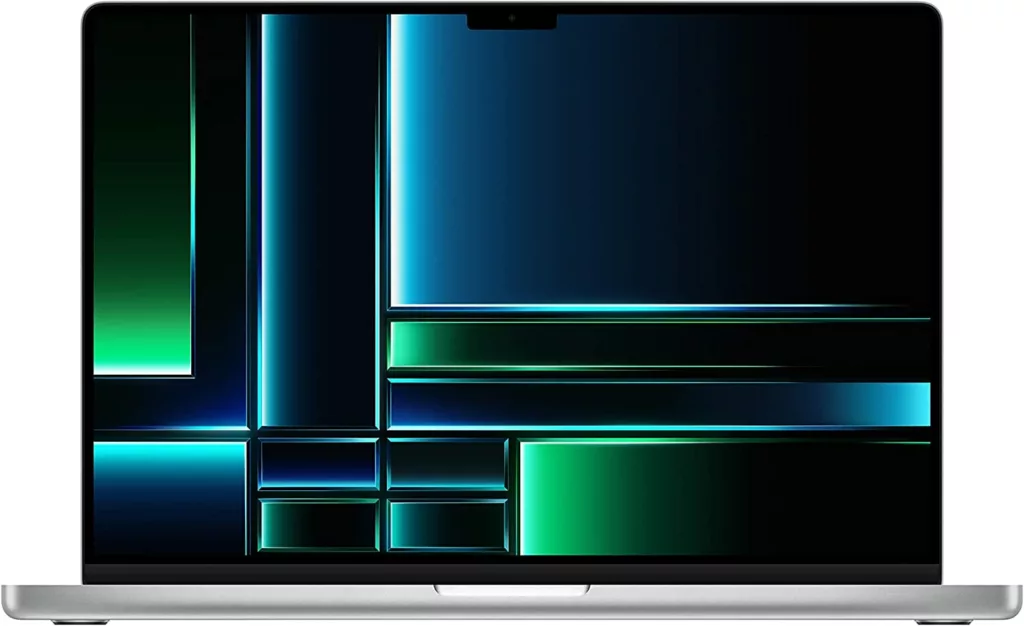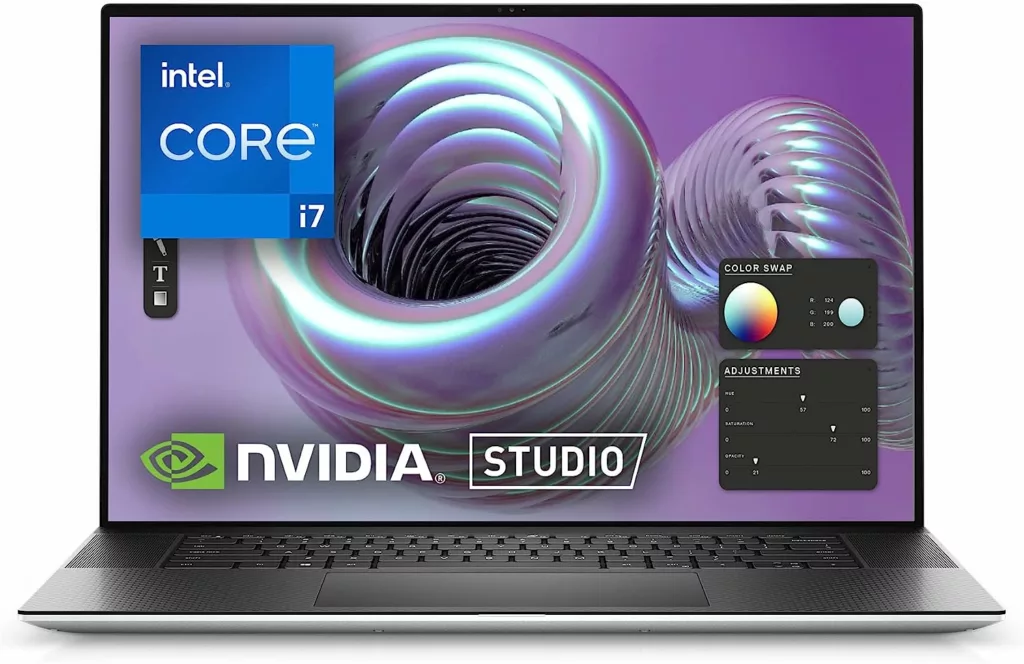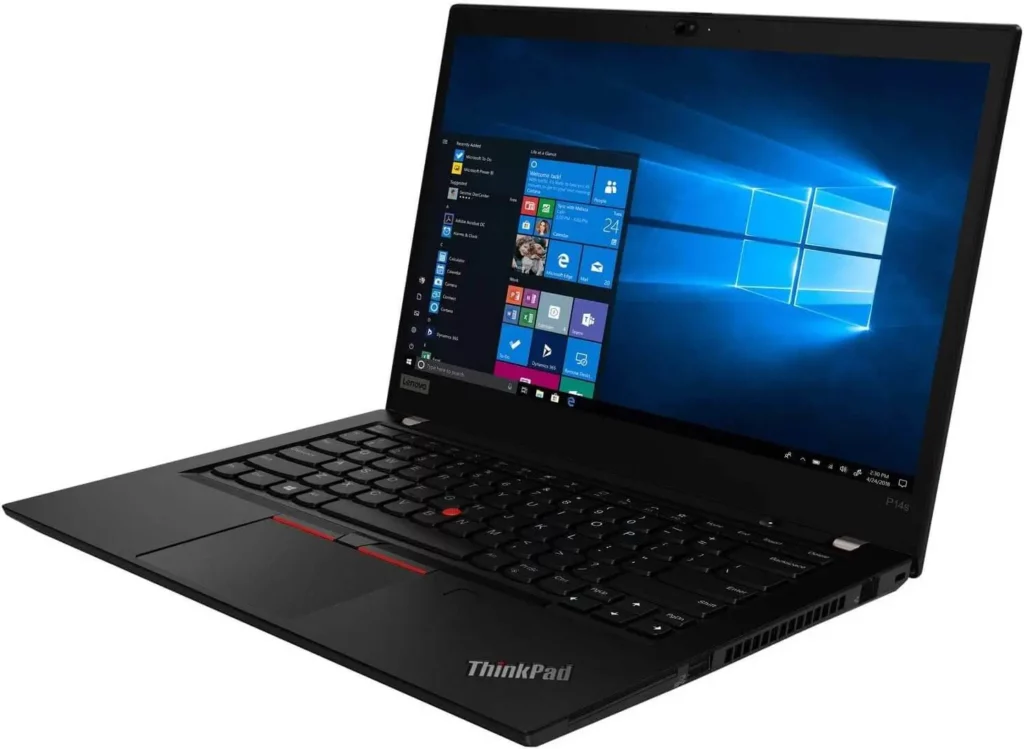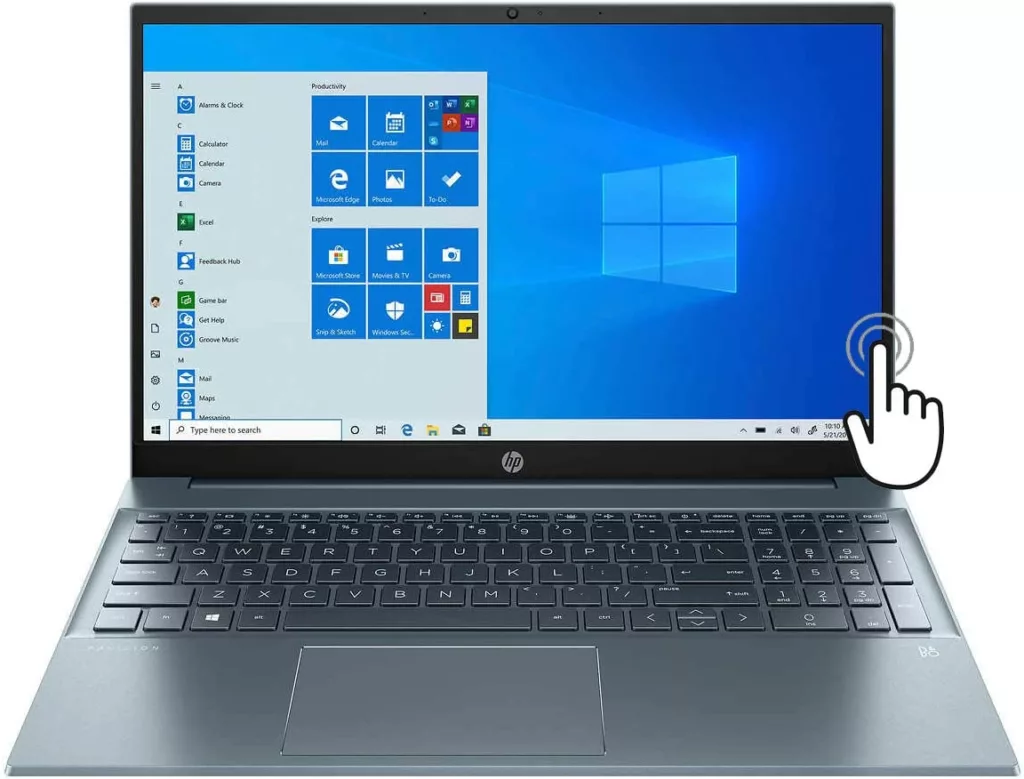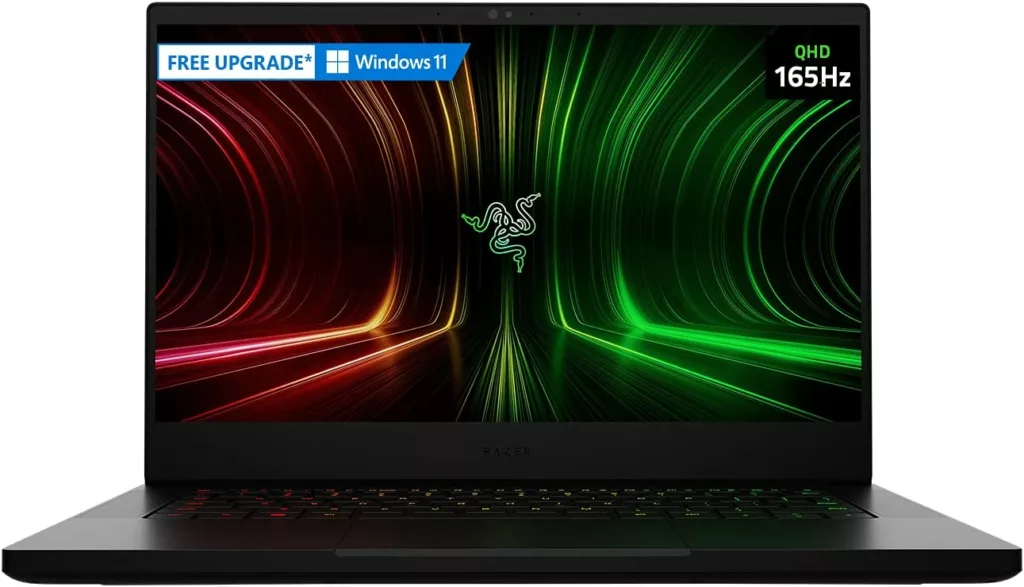The field of engineering is wide open to everyone interested in entering it, regardless of whether they want to specialize in mechanical engineering, electricity, civil engineering, aircraft, chemistry, computing, the environment, industry, materials, or even biomedical. If you want to succeed in your amazing mission to improve the world via engineering, you must welcome challenges, foster curiosity, and let your creativity grow uncontrolled.
Do you know how important it is to have the right tools to succeed as an engineering student? A powerful and reliable laptop is a vital tool for everything from learning sophisticated simulations to designing elaborate systems. We have chosen the best laptops that can work for all the different engineering disciplines in this article, these models are chosen to cater to the needs of various engineering specializations. These portable computers are built to help you perform better in CAD programs, FEA and CFD simulations, and fluid modeling, and to change the way you approach engineering tasks in general.
These laptops offer cutting-edge processing power, voluminous memory, specialized graphics, and magnificent display, striking the perfect balance between power and efficiency in your chase of engineering greatness. We are providing you with the finest options based on performance, durability, portability, and cost. Let’s have a look into the revolutionary engineering and technology with the best laptop money can buy, and make the most of your time in school.
Our Top Recomendations For You!
Considering the required features we have carefully chosen the best five laptops for you.
We also have separate articles for specific engineering fields.
- Best laptop for electrical engineering students
- Best laptops for mechanical engineering students
- Best laptop for civil engineering students
- Best laptops for chemical engineering students
- Best laptop for biomedical engineering students
- Best laptop for bioinformatics students
- Best laptop for industrial engineering students
- Best laptop for software engineering students
- Best laptop for data science students
| Laptop | Display | Processor | RAM | Storage | Graphics | Battery Life | macOS |
|---|---|---|---|---|---|---|---|
| Apple MacBook Pro | 16.2″ mini-LED | Apple M2 Pro or M2 Max | 16 GB | 512 GB – 1 TB | 19-core or 38-core GPU | Up to 22 hours | macOS |
| Dell XPS 17 9710 | 17″ 1920 x 1200 | Intel Core i7 11th Gen | 16 GB | 1 TB SSD | NVIDIA GeForce RTX 3050 | Up to 10 hours | Windows 11 Home |
| Lenovo ThinkPad P14s | 14″ Full HD IPS | Intel Core i7-1185G7 | 32 GB | 1 TB NVMe SSD | NVIDIA Quadro T500 | Up to 10 hours | Windows 11 Pro |
| HP Pavilion 15 | 15.6″ 1920×1080 | Intel Core i7 | 8 GB | 512 GB SSD | Intel Iris Xe Graphics | Up to 8 hours | Windows 10 |
| Razer Blade 14 | 14″ 2560 x 1440 | AMD Ryzen 9 | 16 GB DDR5 | 1 TB SSD | NVIDIA GeForce RTX 3070 Ti | Up to 11 hours | Windows 11 |
Here is the tabular summary of all the recommended laptops for engineering students for quick comparison and overview!
Buying Guide: Best Laptop for Engineering Students
When shopping for a laptop, here are the features that are must-haves for any student of engineering:
Powerful Processor: Computing Resources Complex engineering software and simulations necessitate a powerful and efficient processor. For excellent processing speeds and multitasking capabilities, look for laptops equipped with a recent multi-core CPU, such as Intel’s Core i7 or AMD’s Ryzen 7.
RAM: Memory Capacity Engineers rely on a lot of software and simulations that eat up a lot of memory. Choose a laptop with at least 16GB of RAM for optimal multitasking and the smooth loading of large files.
Graphics Capability: In order to run FEA, CFD, and CAD design simulations, a graphics processing unit (GPU) is required. For better visual performance, seek out laptops with a graphics processing unit (GPU) from NVIDIA GeForce or AMD Radeon.
Sufficient Storage: Accessing and storing massive technical files requires a portable device with fast and ample storage. Think about purchasing a laptop with a Solid State Drive (SSD) for speedy startup and data access, as well as a secondary hard drive (HDD) or external storage for redundancy.
High-Quality Resolution: Engineering students often deal with complex designs and simulations, so having a high-resolution monitor with outstanding color accuracy is essential. If you want the best viewing angles and color reproduction possible, you should get a laptop with at least a Full HD (1920×1080) IPS display.
Portability: Students in the engineering field need portable tools because they are continuously on the go. Pick a laptop that can handle your workload while still being easily portable. Find something that won’t load you down too much to easily transport to school.
Connectivity: Make sure the laptop has multiple ports for attaching peripherals, displaying media, and transferring data, such as USB Type-A, USB Type-C, HDMI, and an SD card reader.
Battery Life: Students in the field of engineering may need to do assignments for long stretches of time without the convenience of an electrical outlet. If you want to be productive on the go, you need a laptop with long battery life. A laptop that can survive regular use is essential for engineering students. Laptops should be of high quality and built to last if they are to meet the needs of a busy engineering student.
Cooling system: Engineering work can be taxing on a laptop’s components, causing them to overheat and require the use of a cooling system. Overheating can severely hinder performance, hence a reliable cooling system is essential.
Software Compatibility: Verify that the laptop you’re considering is compatible with the engineering software needed for your field. Verify that it satisfies the minimal system requirements for optimal performance.
Budget Friendly: Finally, as a student, you should think about your budget. Find and compare several solutions that fall within your price range and still provide the aforementioned benefits.
By giving careful thought to these specifics, engineering students can make cautious a decision in choosing a laptop that can aid them on their path to professional success.
This article provides an in-depth comparison of five of the most popular laptops in the engineering field, breaking down key specifications to aid in purchasing selections. Designed with engineering students’ academic success and professional development in mind, these laptops place a premium on performance, portability, and compatibility.
5 common picks that can work in all engineering fields!
Detailed Review
Highlights:
- ProMotion-enabled 16.2-inch mini-LED backlit Liquid Retina XDR display
- Apple M2 Pro or M2 Max SoC for powerful processing
- Up to 96GB unified memory
- 512-1TB SSD for multitasking and data management
- 19-core or 38-core GPU for great graphics and video
- A Long battery life of up to 22 hours
- Thunderbolt 4, SDXC, HDMI, and headphone jacks
- MagSafe 3 for safe charging Wi-Fi 6E and Bluetooth 5.3 for seamless wireless connectivity
- Portability without sacrificing performance
Review
Apple MacBook Pro with Touch ID is a top choice for engineering students in all professions. Outstanding features and cutting-edge technology make it a versatile and effective tool for engineering students, meeting the high criteria of many engineering areas. The MacBook Pro’s 16.2-inch mini-LED backlit Liquid Retina XDR display with ProMotion technology for customizable refresh rates is its showpiece. For creating complex circuits, analyzing complex data, and conducting simulations, this display has excellent clarity, color accuracy, and contrast.
The MacBook Pro has up to 96GB of unified memory and 1TB of storage and the latest System on Chip (SoC), an Apple M2 Pro or M2 Max. The 12-core CPU, 38-core GPU, and 16-core Neural Engine enable students to handle resource-intensive tasks with unmatched processing power. Students may easily perform complex visualizations and multimedia activities with 19-core and 38-core GPUs.
Three Thunderbolt 4 (USB-C) ports, an SDXC card slot, HDMI, and a 3.5 mm headphone jack complete the connectivity. The return of MagSafe 3 assures safe and convenient charging. Wi-Fi 6E and Bluetooth 5.3 enable fast, dependable wireless networking for collaboration and online research. Portability is important because students can carry it between lectures, labs, and projects without affecting performance. The 22-hour battery life keeps it efficient and robust all day, making it the best laptop for mechanical engineering students.
The Apple 2023 MacBook Pro 16-inch with Touch ID is ideal for engineering students. Its durability, powerful performance, beautiful display, extensive connectivity options, and portability help engineers of all disciplines reach their full potential and thrive academically.
Highlights:
- 17-inch 1920 x 1200 monitor for immersive images
- High-performance 4.6 GHz Intel Core i7 11th Generation processor
- 16 GB DDR4 RAM
- 1TB SSD for extensive storage and rapid data access
- NVIDIA GeForce RTX 3050 GPU with 4 GB dedicated graphics memory for improved visuals
- 10-hour battery life for productivity
- Bluetooth connectivity for wireless devices and peripherals
- Backlit keyboard for low-light use
- Memory card slot for convenient external data transfer
- Windows 11 Home for easy computing
Review
Students in all engineering fields choose the Dell XPS 17 9710 for its outstanding performance and portability, which meet engineering tasks. The laptop handles resource-intensive engineering simulations, models, and analyses well thanks to its 11th-gen Intel Core i7-11800H processor and 16GB of DDR4 memory. The NVIDIA GeForce RTX 3050 graphics card with 4GB GDDR6 VRAM improves design software speed and real-time 3D model visualization for civil, mechanical, and architectural engineering students.
The 17-inch Full HD+InfinityEdge Anti-Glare display, with 1920 × 1200 pixels, offers vibrant and detailed images for complicated engineering tasks and exact details. Correct engineering drawings and building designs reduce eye strain during lengthy use. The 1TB M.2 PCIe NVMe solid-state drive stores and loads big files from projects, data sets, and software repositories needed in all engineering disciplines quickly. It is one of the best laptops for software engineering students.
Students may work remotely with a 10-hour battery life, and Windows 11 Home support increases the user experience with the newest software features and improvements. The Dell XPS 17 9710’s silver color and sleek form make it suitable for all technical professions. Student portability and low size make it convenient to tote between courses and businesses. The laptop’s Bluetooth and lack of an optical drive make it portable without compromising connectivity.
The Dell XPS 17 9710 is a great choice for engineering students across many disciplines, offering exceptional performance and portability for CAD design, structural analysis, and environmental simulations. This laptop is trustworthy and efficient for academic and professional work in civil, mechanical, electrical, and other engineering fields.
Highlights:
- 14-inch Full-HD IPS touchscreen with an anti-glare and slim bezel
- Intel Core i7-1185G7 processor
- with 32GB DDR4 RAM and 1TB NVMe M.2 SSD
- NVIDIA Quadro T500 for enhanced graphics and simulation studies
- 10-hour battery life for efficient working
- Windows 11 Pro
- Keyboard lighting and biometric reader
- Thunderbolt 4 adaptability
- Wi-Fi 6 and Bluetooth 5.1 ensure wireless connectivity
- 720p HD surveillance camera with shutter
Review
The Lenovo ThinkPad P14s Gen 2 Laptop is a preferred choice for engineering students due to its power and efficiency. Its varied qualities make it perfect for civil, mechanical, electrical, and other engineering students. The laptop’s 14″ FHD IPS touchscreen display lets students design, simulate, and model with precision. The Intel Core i7-1185G7 processor and NVIDIA Quadro T500 Graphics enable smooth simulations and modeling in AutoCAD, Revit, MATLAB, and more. The laptop easily handles massive datasets and complex engineering tasks with 32GB of DDR4 RAM and a 1TB NVMe M.2 SSD for storage and fast file access. This laptop is a top choice for students majoring in Industrial Engineering.
Its Windows 11 Professional interface and productivity-boosting features help engineering students work smoothly. The backlit keyboard, biometric reader, and TrackPoint improve usability and security for common tasks. Intel Wi-Fi 6 and Bluetooth 5.1 enable engineering project collaboration and online research with fast and dependable wireless connectivity.
For video conferences and presentations, the 720p HD camera with a privacy shutter provides privacy and clear images. For up to 10 hours, the 50Wh Lithium-Ion battery lets students focus on projects without worrying about power. The laptop’s 2x Thunderbolt 4, USB 3.2 Gen 1, HDMI, and headphone/microphone combo input allow external devices and screens to be connected seamlessly, improving versatility and productivity.
The Lenovo ThinkPad P14s Gen 2 Laptop is a great choice for engineering students of any field. Its powerful hardware, plentiful memory and storage, user-friendly features, and portability make it a great engineering tool for all disciplines. This laptop provides an efficient and productive computing experience for civil engineering students constructing structures and computer engineering students performing sophisticated simulations to help them succeed in school and work.
Highlights:
- 5.6-inch display with a resolution of 1920×1080 pixels for a crisp visual experience
- 2.8 GHz Intel Core i7 processor and 8 GB DDR4 RAM for steady performance and multitasking
- 512 GB SSD storage for ample space and quick boot times
- Integrated Intel Iris Xe Graphics for stunning visuals and smooth graphics performance
- Lightweight and portable design weighing only 3.86 pounds
- Runs on Windows 10 with a user-friendly interface and compatibility with engineering software
- Average battery life of 8 hours for on-the-go productivity
- Bluetooth technology for easy wireless connectivity
Review
The HP Pavilion 15 is a popular choice for engineering students across all disciplines because of its versatility and reliability. This laptop’s 15.6-inch display and 1920×1080 resolution provide a sharp, immersive visual experience for engineering work. The laptop’s 2.8 GHz Intel Core i7 processor and 8 GB DDR4 RAM enable smooth multitasking and performance for demanding engineering software.
This laptop runs smoothly throughout complex simulations and model creation. The HP Pavilion 15 has 512 GB SSD storage for engineering projects, software installations, and files. The SSD speeds up startup times, letting you start work quickly. The integrated Intel Iris Xe Graphics deliver breathtaking visuals and smooth graphics performance for 3D modeling software and complicated data analysis.
Weighing just 3.86 pounds, its compact design makes it a stylish and useful academic companion. Fog Blue is sophisticated and appealing to engineering students of many disciplines. Running Windows 10, the HP Pavilion 15 offers a familiar and user-friendly interface and a large choice of engineering software that is compatible with the machine. With an average battery life of 8 hours, this laptop lets you work on the go. Bluetooth technology promotes device connectivity for seamless wireless communication.
In conclusion, the HP Pavilion 15 is a stylish and durable laptop for engineering students of many disciplines. Its excellent performance, abundant storage, integrated graphics, and portability make it a reliable engineering platform. The HP Pavilion 15 combines utility and elegance to help mechanical, electrical, civil, and computer engineering students succeed.
Highlights:
- AMD Ryzen 9 processor with 3.3 GHz clock speed for easy multitasking
- DDR5 RAM with a lightning-fast 4800 MHz speed
- 1 TB SSD storage for all of your projects and files
- For immersive visuals, use the NVIDIA GeForce RTX 3070 Ti graphics
- Windows 11 operating system
- lightweight design weighing only 3.93 pounds
- Up to 11 hours of battery life for on-the-go productivity
Review
The Razer Blade 14 is a preferred choice for engineering students across many disciplines due to its performance and precision. This laptop’s 14-inch display with 2560 x 1440 pixels delivers stunning images and immersive clarity, enhancing engineering work in numerous sectors. It has a 3.3 GHz AMD Ryzen 9 CPU with eight high-performance cores lets students tackle difficult engineering projects quickly. The 4800 MHz DDR5 16 GB RAM boosts productivity by enabling seamless multitasking and complicated software programs. Students can work with big datasets, simulations, and resource-intensive software without latency thanks to quicker memory.
The Razer Blade 14 has a 1 TB SSD for engineering projects, software installations, and multimedia assets. The SSD has plenty of capacity and excellent read and write speeds, making boot times and data access fast. The NVIDIA GeForce RTX 3070 Ti’s 16 GB of dedicated graphics RAM boosts engineering image performance and visual quality for CAD software, 3D modeling, and sophisticated simulations.
Portability without sacrificing weighing only 3.93 pounds and compact profile that helps students to work on engineering projects anywhere. The laptop runs Windows 11, providing an intuitive and perfect user experience with increased productivity capabilities, enhanced security, and seamless interoperability with a wide range of engineering software programs.
Built-in HDMI 2.1, USB-C (2 ports), USB-A (2 ports), and Wi-Fi6E for ultra-connectivity and accessory compatibility. The 11-hour battery life keeps up with busy student schedules, giving you the power and stamina to work on lab assignments, attend courses, or study on the road. The Razer Blade 14 is a powerful, precise, and portable laptop that enhances engineering. Its powerful processor, innovative DDR5 RAM, sufficient storage, vivid graphics, and sleek design make it a top pick for engineering students across all disciplines, symbolizing the future of engineering.
Why we choose these laptops among many other options available?
When it comes to selecting the best laptop for engineering students, each of the aforementioned laptops possesses distinctive strengths and capabilities that accommodate the varying demands of various engineering disciplines.
- The Apple MacBook Pro is a versatile option for a variety of engineering duties, including data analysis, simulations, and intricate designs, due to its remarkable display, powerful processing, and extensive connectivity options.
- The Dell XPS 17 9710 is an excellent option for engineering students who require precision and visual clarity for CAD software, modeling, and simulations due to its large, high-resolution display and potent hardware.
- The Lenovo ThinkPad P14s excels at handling large datasets and simulations across engineering disciplines with its touchscreen display, potent processor, and dedicated graphics.
- The HP Pavilion 15’s performance and portability are well-balanced, making it a reliable companion for engineering students who require versatility in managing software applications and performing academic tasks with ease.
- The Razer Blade 14 stands out as a juggernaut due to its cutting-edge processor, lightning-fast RAM, and potent graphics, making it the go-to device for engineering simulations, 3D modeling, and other graphics-intensive tasks.
Conclusion
In conclusion, the finest laptop for engineering students will ultimately depend on individual preferences, specific engineering disciplines, and the required software applications. These laptops provide a vast array of features and capabilities, enabling engineering students to realize their maximum potential, excel in their academic endeavors, and pave the way for future success in the engineering industry.
Additional Features to Consider
In addition to the previously mentioned essential features, the following features can significantly enhance the overall laptop experience for engineering students:
Touchscreen Capabilities: A touchscreen display is advantageous for tasks such as drafting or annotating engineering drawings and simulations, as it provides a more interactive and intuitive user experience.
Support for Stylus: For students in disciplines such as civil engineering and architecture, a laptop with stylus support can be indispensable for precise drawings and annotations.
Thunderbolt 3: Thunderbolt 3 ports offer high-speed data transmission and can connect to external GPUs or docking stations, thereby expanding the laptop’s capabilities for complex engineering tasks and multiple displays.
Backlit Keyboard: Engineering students frequently work in dimly lit environments or study late into the night. An illuminated keyboard facilitates typing in low-light environments.
System Security: Biometric security measures, such as fingerprint sensors and facial recognition, can provide an additional layer of protection for sensitive engineering data and projects.
Numpad: A laptop with a dedicated number pad can enhance the efficacy of students who frequently work with numerical data or calculations.
VR-ready: In certain engineering disciplines, such as virtual prototyping or simulation, a laptop that is VR-ready can provide an immersive and genuine experience for design evaluation.
Audio Quality: Engineering students attending online lectures, webinars, or collaborating with teams via video conferencing may require high-quality audio.
Expandability: Look for laptops with upgradable RAM and storage, which can extend the laptop’s lifespan and accommodate future engineering demands.
Wireless Connectivity: Support for the most recent Wi-Fi standards (Wi-Fi 6/6E) ensures quick and dependable wireless connectivity on campus and in engineering laboratories.
Long-term Support: Choose laptops from reputable manufacturers that offer dependable customer support and frequent software updates for longer product life.
Environmental Considerations: Some laptops feature eco-friendly features, such as energy-efficient components or recycled materials, which correlate with the values of sustainability held by many engineering students.
By considering these additional features, engineering students can tailor their laptop selections to their specific requirements, thereby enhancing the productivity and enjoyment of their academic journey.
Essential Software for Engineering Students
Engineering students require a variety of software tools to support their coursework, projects, and research. The essential software for engineering students can vary depending on their specific field of study, but here are some commonly used categories and examples of software within each category:
- Computer-Aided Design (CAD) Software:
- AutoCAD
- SolidWorks
- CATIA
- Creo (Pro/ENGINEER)
- Fusion 360
- Programming and Coding:
- MATLAB
- Python (with libraries like NumPy, SciPy, and Matplotlib)
- Java
- C/C++
- ANSYS
- Simulation and Analysis:
- ANSYS
- COMSOL Multiphysics
- Abaqus
- OpenFOAM (for computational fluid dynamics)
- Aspen HYSYS (chemical process simulation)
- Math and Computational Tools:
- Mathematica
- Maple
- MathCAD
- Octave (an open-source MATLAB alternative)
- Document and Presentation Tools:
- Microsoft Office Suite (Word, Excel, PowerPoint)
- LaTeX (for technical documentation)
- Adobe Acrobat (for PDF editing)
- Google Docs/Sheets/Slides
- Version Control and Collaboration:
- Git (with platforms like GitHub, GitLab, and Bitbucket)
- Slack (for team communication)
- Trello or Asana (for project management)
- Overleaf (for collaborative LaTeX editing)
- CAD and 3D Modeling:
- Blender (for 3D modeling and animation)
- Rhino (for industrial design)
- SketchUp
- Electronics and Circuit Design:
- Eagle
- KiCad
- LTspice
- Multisim
- Statistical Analysis and Data Visualization:
- R (statistical computing and graphics)
- JMP
- Tableau
- Excel (for basic data analysis)
- Geographical Information Systems (GIS):
- ArcGIS
- QGIS (open-source alternative)
- Simulation and Control Systems:
- LabVIEW
- Simulink
- Mechanical Engineering Analysis:
- MSC Nastran
- Adams (multibody dynamics)
- Chemical Engineering Software:
- Aspen Plus (chemical process simulation)
- ChemDraw (chemical structure drawing)
Remember that the specific software you need will depend on your engineering discipline and the courses you’re taking. Many universities also provide access to certain software packages for free or at a discounted rate for students. Always check with your instructors or department to see if they recommend specific software for your program.







